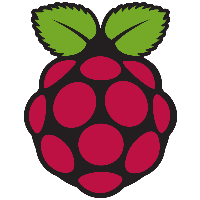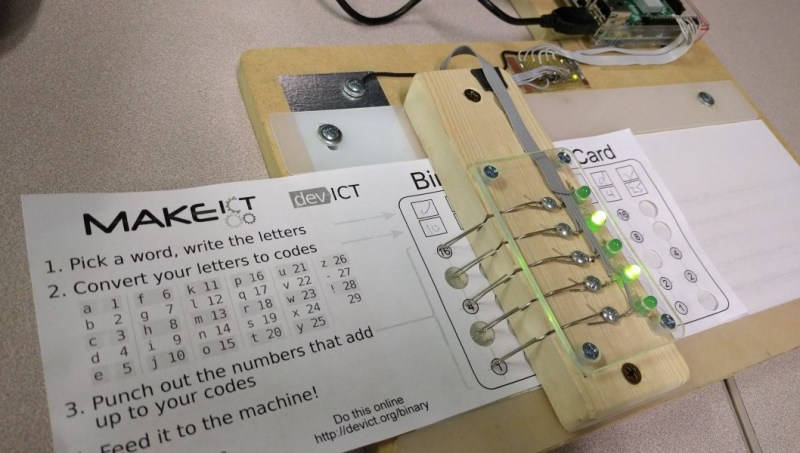Punch card data input is so 1890 US Census, right? Maybe not, if your goal is to educate kids about binary numbers and how they can encode characters. In which case, this paper clip and metal tape punch card reader might be just the thing you need.
Built as part of the educational outreach efforts of the MakeICT hackerspace, this project allows kids and adults to play with binary numbers and get some instant feedback. The reader itself is a simple affair of wood and plastic; bent paperclips make contact with a foil tape strip and LEDs show the state of the five input bits. A card is provided to students with spaces for the letters of a word that they want to input, along with a table to translate each letter into a number. Students use a paper punch to encode each character in binary. As the card is pulled through the reader, the letters are spoken by the Pi in turn and the whole word is pronounced at the end.
We’ll no doubt hear quibbles with the decision not to use ASCII for the character set, but we can see the logic in keeping the number of bits to a minimum and not distracting from the learning process. What’s cool about this is that it engages kids on so many levels. They learn about binary numbers, encoding systems, interfacing a computer to the real world, and if they care to delve deeper, they can learn about the code behind everything. It’s a great hook into the hacking arts.
And once the kids learn a thing or two, maybe they can use this punch-card Twitter interface to tweet their new-found knowledge.

The Raspberry Pi Zero contest is presented by Hackaday and Adafruit. Prizes include Raspberry Pi Zeros from Adafruit and gift cards to The Hackaday Store!
See All the Entries || Enter Your Project Now!















This is a clever little device to serve a good purpose. I like it.
Though I fear you’re right, I wonder why anyone would quibble about not using ASCII? Given the number of differnt encodings have been used over the last 70 or 150 years, and are still in use– including a few legacy uses of things like 5-bit teletype– anyone arguing for ASCII, of all encodings, if flogging.
It’s a very good place to start because it drives home an understanding of exactly what a computer is really working with, a concept that is very important to understand for those who do NOT go on to hack.
For ASCII, you’ll be wanting paper tape :-)
Those original 80-column cards were useful in so many ways, long after the card punch and reader machines disappeared. Sadly, I ran out a few years ago, went to buy a new box, and was shocked at how they’ve become unobtainium. There are just a few online sellers of artisanal hand-polished 10-packs at outrageous cost. I miss the box of a thousand for $6.
…and you just KNOW there’s a warehouse full somewhere!
Originally, cards were read with “brushes”, bundles of small-gauge wire crimped into a (brass?) holder, which was then clamped into an insulated positioning bar. They needed to be replaced periodically. I never did it, but watched it being done. Later, they were read photoelectrically.
I got to see this in action yesterday at the Society of Women Engineer’s Engineering Expo, it was a busy attraction! Sweet simple setup and the kids loved it!
The 1890 census was nearly all lost in a fire. A roadblock to many a genealogist.